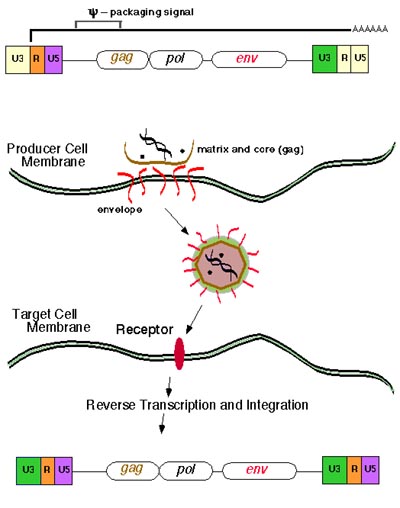|
The
retroviral life cycle begins in the nucleus of an infected cell.
At this stage of the life cycle the retroviral genome is a DNA
element integrated into and covalently attached to the DNA of
the host cell.The genome of the virus is of approximately 8-12
kilobases of DNA (depending upon the retroviral species). Full-length
genomic mRNA is made initiating at the beginning ofthe R (repeat)
at the 5' LTR (Long Terminal Repeat).The free particle can infect
new cells by binding to a cell surface receptor. The specificity
of the virus-cell interaction is determined largely by the envelope
protein(s) of the retrovirus. Infection leads to injection of
the virus nucleoprotein core (consisting mostly of gag-derived
proteins, full-length genomic RNA, and the reverse transcriptase
protein).
Once
inside the cell, the nucleoprotein complex accesses intracellular
DNA nucleotide triphosphate pools, whereupon the reverse transcriptase
protein initiates creation of a double-stranded DNA copy of
the genome of the virus in preparation for integration into
the host cell chromosome. Upon completion of reverse transcription,
the viral enzyme Integrase searches the DNA for an appropriate
"home", whereupon the integrase clips the host DNA and sews
the double-stranded DNA into the host DNA (see below). The virus
is now prepared to initiate a new round of replication.
|



